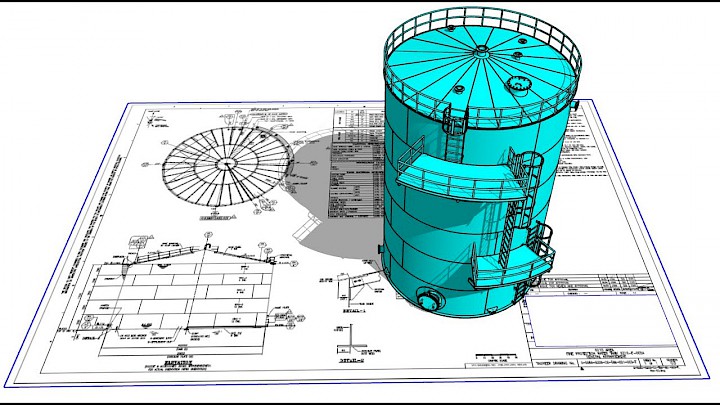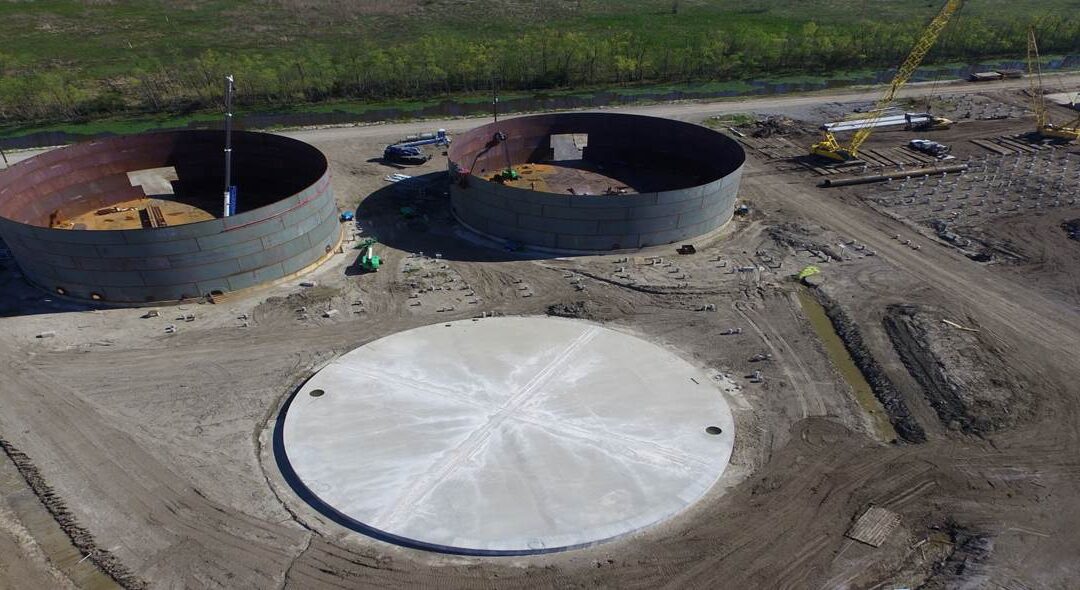Professional Tips for Conducting a Successful API 650 Welding Inspection
Wiki Article
A Step-by-Step Take A Look At the Installation Refine of Welding Examination Techniques
Welding evaluation is a vital process that guarantees structural integrity and safety and security. The setup of examination methods includes a number of organized steps, each integral to attaining dependable outcomes. From planning and tool choice to conducting aesthetic and non-destructive tests, each stage needs cautious focus. Comprehending these treatments can substantially enhance high quality assurance in welding projects. What challenges arise in applying these techniques, and exactly how can they be properly addressed?Understanding the Significance of Welding Evaluation
Welding examination is an essential part of ensuring architectural integrity and security in building and production procedures. This technique entails evaluating welded joints for flaws, making sure that they fulfill particular requirements and guidelines. By methodically determining weld quality, examiners can determine problems such as splits, spaces, and insufficient blend, which can jeopardize the stamina and sturdiness of structures.The significance of welding assessment expands past prompt safety problems; it helps prevent pricey failings and possible threats in the long-term. Effective evaluation methods foster compliance with sector standards, consequently improving the overall integrity of bonded elements. Furthermore, a robust assessment procedure adds to preserving the reputation of suppliers and home builders, as it assures clients of the high quality of their jobs. Eventually, comprehending the importance of welding examination is critical for advertising risk-free building and construction methods and making certain the long life of crucial facilities and products.
Picking the Right Tools for Evaluation
When choosing the ideal devices for inspection, it is important to consider the details requirements of the welding procedure and the products involved. Numerous assessment approaches, such as visual, ultrasonic, and radiographic screening, necessitate distinctive devices customized to their special demands. For aesthetic inspections, tools like multiplying calipers and glasses are vital for evaluating weld high quality. Ultrasonic screening needs specialized tools with the ability of sending and receiving audio waves to identify inner flaws. Radiographic screening, on the other hand, makes use of X-ray or gamma-ray resources alongside delicate film or digital detectors to expose inconsistencies.
Furthermore, personal safety tools (PPE) is necessary to ensure the security of inspectors during examinations. Picking the right devices not just boosts the accuracy of evaluations however also contributes to the overall integrity and safety of the welding job. Consequently, an extensive understanding of readily available devices and their applications is important for efficient welding examination.
Getting ready for the Examination Process
Prior to initiating the assessment procedure, it is vital to establish a detailed strategy that describes the scope and objectives of the assessment. This strategy needs to consist of particular standards that define what constitutes acceptable quality in the welding work being checked. Determining the pertinent codes and requirements is vital, as they will lead the examination standards and techniques.Furthermore, workers associated with the examination has to be properly trained and certified in welding assessment methods to assure integrity and accuracy. A checklist can be useful in organizing the various elements of the examination, ranging from equipment preparedness to ecological conditions that can influence the analysis.

Logistical considerations such as scheduling, available resources, and interaction between team members ought to be attended to. By preparing methodically, examiners can boost the performance of the evaluation and ensure that all crucial variables are properly thought about prior to continuing with the evaluation itself.
Performing Aesthetic Assessments

Carrying out visual inspections is a crucial action in the welding inspection procedure, requiring cautious prep work to ensure reliable evaluation. Examiners must recognize with key problem signs that can signify prospective problems in weld high quality. By concentrating on these aspects, one can enhance the general integrity of the assessment outcomes.
Planning For Visual Assessment
Visual inspection works as a critical primary step in the welding have a peek at this website evaluation procedure, assuring that any kind of possible problems are identified early (API 650 Welding Inspection). Proper preparation is crucial for efficient aesthetic assessment. Examiners ought to start by examining relevant paperwork, consisting of welding treatments and specs, to understand the job demands. They should collect needed devices, such as amplifying glasses, flashlights, and ideal individual safety tools (PPE) A comprehensive exam of the assessment area is important; examiners must confirm it is totally free and clean of obstructions. Furthermore, it is essential to establish optimal lights conditions to enhance exposure of welds. By taking these primary actions, examiners can produce a setting favorable to determining inconsistencies and assuring the integrity of the welded structuresTrick Flaw Indicators
A thorough understanding of key problem indicators is important throughout aesthetic assessments to assure the high quality and security of welded joints. Examiners must focus on certain signs such as cracks, porosity, undercuts, and incomplete combination. Fractures might look like sharp lines and can jeopardize architectural honesty. Porosity shows up as little holes that can deteriorate weld stamina. Undercuts, which are grooves along the weld side, can result in stress concentration. Insufficient fusion indicates that the weld steel did not correctly bond with the base material, leading to a weak joint. By systematically determining these issues, examiners can ascertain compliance with market standards and enhance the general reliability of welded frameworks, ultimately contributing to much safer operational conditions.Implementing Non-Destructive Evaluating Techniques

Many non-destructive testing (NDT) techniques are integral to ensuring the honesty of bonded frameworks without compromising their capability. These approaches allow inspectors to evaluate weld quality and discover problems without triggering damage to the materials being checked. Usual NDT strategies consist of ultrasonic testing, radiographic testing, magnetic fragment testing, and color penetrant screening. Each approach offers a certain objective, resolving various types of defects such as fractures, porosity, or incomplete combination.
Carrying out NDT strategies calls for an organized method, beginning with choosing the suitable method based upon the products and the nature of the weld. Educating personnel in these methods is necessary for accurate outcomes. In addition, developing clear procedures and criteria guarantees consistency throughout the inspection see page process. By incorporating NDT into the welding assessment process, organizations can boost the reliability of their items while reducing prospective risks related to architectural failings. This positive strategy inevitably adds to maintaining security and high quality requirements in welded buildings.
Documenting and Examining Assessment Results
Reliable documents and analysis of inspection outcomes are essential components of the welding evaluation procedure. Precise records of inspection searchings for function as a referral for top quality assurance and compliance with sector requirements. API 650 Welding Inspection. Assessors should utilize electronic systems or structured kinds to log information such as the sort of weld, examination methods utilized, and any discrepancies recognized during the assessmentOnce information is accumulated, detailed analysis is vital. This involves contrasting results against developed criteria to determine trends or persisting problems. Statistical devices might be utilized to evaluate flaws and examine their effect on overall weld top quality.
Effective communication of searchings for to relevant stakeholders is essential. Summaries and records need to be clear and succinct, highlighting crucial insights and suggestions for rehabilitative actions. By methodically recording and analyzing examination results, organizations can cultivate constant renovation in welding techniques and enhance item integrity.
Often Asked Inquiries
What Credentials Are Needed to Become a Welding Examiner?
To become a welding inspector, one usually requires pertinent certifications such as AWS CWI, in addition to experience in welding methods, expertise of welding codes, and effectiveness in inspection methods to ensure top quality and safety standards.Exactly How Usually Should Welding Inspections Be Performed?
Welding evaluations ought to be performed frequently, commonly after each weld is finished, and occasionally throughout tasks. Variables such as project complexity, market requirements, and regulatory requirements can affect the frequency of these inspections.What Is the Price of Welding Examination Providers?
The price of welding examination solutions differs significantly based on factors such as task dimension, complexity, and location. Normally, costs range from $100 to $150 per hour, with additional costs for specialized testing and certifications.Are There Certifications for Welding Inspectors?
Yes, there are numerous accreditations for welding examiners, consisting of those used by the American Welding Society (AWS) and the International Institute of Welding (IIW) These certifications assure examiners possess the essential skills and knowledge for reliable assessments.
How Do I Pick an Examination Company?
To select an examination service supplier, one ought to review qualifications, visit the site experience, market reputation, and customer evaluations. In addition, comparing service offerings and prices can aid guarantee the chosen supplier meets specific project needs efficiently.Furthermore, workers included in the evaluation needs to be sufficiently educated and certified in welding evaluation methods to assure integrity and accuracy. Performing aesthetic inspections is a vital action in the welding inspection process, needing cautious preparation to ensure efficient analysis. Visual examination offers as a critical first action in the welding examination procedure, guaranteeing that any potential defects are identified early. Effective documentation and analysis of inspection results are essential elements of the welding examination procedure. Welding examinations must be carried out on a regular basis, normally after each weld is finished, and occasionally throughout projects.
Report this wiki page